 |
 |
 |
| |
Geographical Differences in Functional
Impairment of PLWH: Over One Third in
Global HIV Analysis Have Impaired Physical Function
|
| |
| |
2022 CROI, February 12-16 and 22-24, 2022
Mark Mascolini
A global analysis of people with HIV infection found that over one third have test-measured physical functional impairment, which the study linked to cardiometabolic risk [1]. The 7736-person analysis found significant differences in self-reported function; for example, the worst function occurred in South Asia (India) and the best in adjacent Southeast/East Asia (Thailand).
A team of US researchers led by Kristine Erlandson (University of Colorado, Aurora) argued that simple measures of physical function-like walking around the block or dancing-can better estimate the impact of aging than chronologic age in people with HIV. Diverse studies found that functional impairment begins at a younger age in people with HIV. But little is known about differences in functional impairment by global region, gender, or antiretroviral therapy (ART) regimen.
To begin addressing these questions, the researchers analyzed early findings from REPRIEVE, an ongoing double-blind, randomized trial comparing pitavastatin with placebo to prevent cardiovascular disease in people with HIV [2]. To enter the trial, people have to be 40 to 75 years old and taking stable ART; they need a CD4 count at or above 100 and cannot already have cardiovascular disease. The study population lives in one of five WHO-defined super-regions: high income (US, Canada, Spain), Latin America/Caribbean (Puerto Rico, Brazil, Peru, Haiti), South Asia (India), Southeast/East Asia (Thailand), and sub-Saharan Africa (Botswana, South Africa, Zimbabwe, Uganda).
REPRIEVE investigators used the Duke Activity Status Instrument (DASI) to let participants rate their functional capacity [3]. This self-test assigns scores for different activity levels, such as walking indoors, climbing stairs, running a short distance, doing moderate housework, participating in moderate recreational activities like dancing, and participating in strenuous sports like swimming. A total score rates the test taker as having no impairment, some impairment, moderate impairment, or severe impairment. Lower scores indicate worse impairment.
The researchers used linear regression to assess preselected characteristics for their association with DASI-determined functional status. They used linear and logistic regression to figure the impact of functional status on cardiovascular outcomes and the metabolic syndrome or its components (high blood pressure, high blood sugar, excess waist fat, abnormal cholesterol or triglyceride levels).
Among the 7736 participants, 30% were cisgender women and 2% transgender. Slightly more than half of participants lived in high-income countries, about 20% in Latin America or the Caribbean, about 20% in Africa, and the rest in Asia.
While 28% of participants had some functional impairment, 8% had moderate impairment, and fewer than 0.5% had severe impairment. Overall, more than one third had some functional impairment. In high-income countries, Latin America/Caribbean, and Africa, about two thirds of participants had no functional impairment, while in Southeast/East Asia (Thailand) about 90% reported no impairment, and in South Asia (India) almost three quarters had some impairment and most of the rest had moderate impairment.
Adjusted analysis with high-income countries as the comparison group found similar functional status scores in Latin America/Caribbean and sub-Saharan Africa, an independently higher (better) score in Southeast/East Asia, and an independently lower (worse) score in South Asia.
In the same kind of analysis, cisgender women and trans men independently had worse function than cisgender men; functionproved independently worse with each added 5 years of age compared with 40-44; obese people independently had worse function than overweight or normal-weight people; current and former smokers independently had worse function than never-smokers; people with longer ART duration independently had worse function than those with fewer than 5 years of ART; people who took a protease inhibitor or an integrase inhibitor regimen independently had worse function than those who took a nonnucleoside regimen; and in high-income countries blacks or African Americans independently had worse function than whites.
Much lower rates of yard work, sexual activity, moderate recreation, and strenuous sports accounted for the strikingly worse functional impairment in South Asia than in the other regions. The researchers surmised this difference may reflect cultural differences that more objective markers may iron out.
In the overall study population, adjusted for region, regression analysis linked moderate to severe impairment to a 0.5-point greater atherosclerotic cardiovascular disease risk score, to a 6-cm greater waist circumference, and to 1.45 greater odds of metabolic syndrome. The REPRIEVE team concluded that physical functional impairment is linked to cardiometabolic risk and that DASI may provide a measure of that risk.
References
1. Erlandson K, Fitch K, McCallum S, et al. Geographical differences in functional impairment of people with HIV. 2022 CROI, February 12-16 and 22-24, 2022. Abstract 34.
2. REPRIEVE Randomized Trial to Prevent Vascular Events in HIV. https://www.reprievetrial.org/
3. Hlatky MA, Boineau RE, Higginbotham MB, et al. A brief self-administered questionnaire to determine functional capacity (The Duke Activity Status Index). Am J Cardiol, 1989;64:651-654. doi: 10.1016/0002-9149(89)90496-7. https://www.ajconline.org/article/0002-9149(89)90496-7/pdf
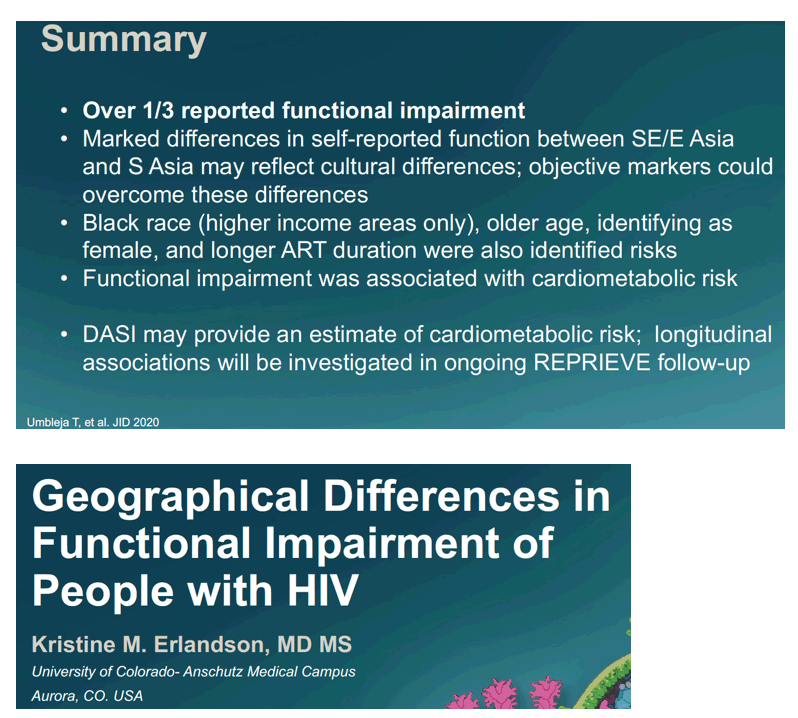
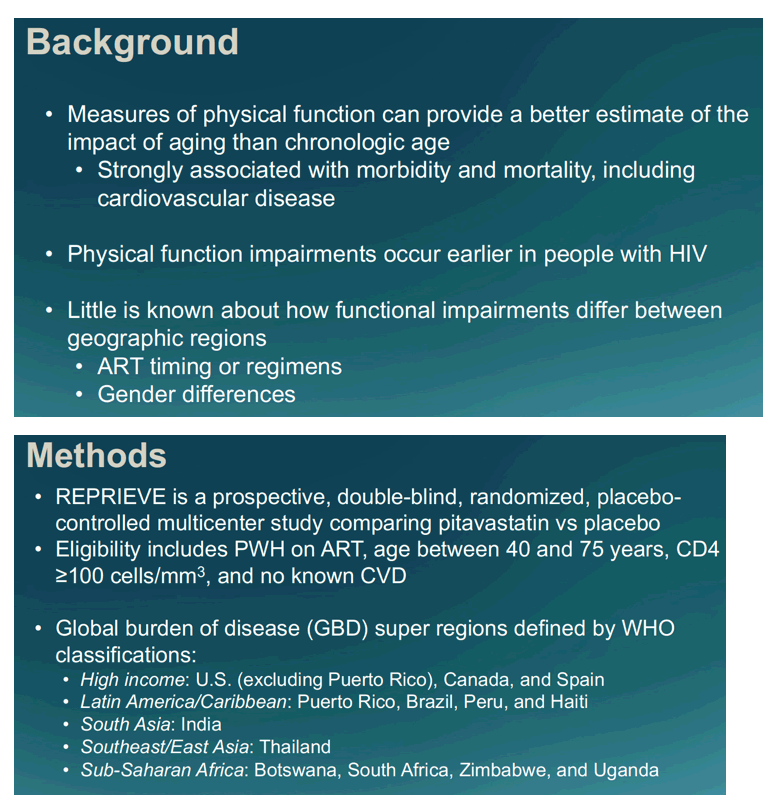
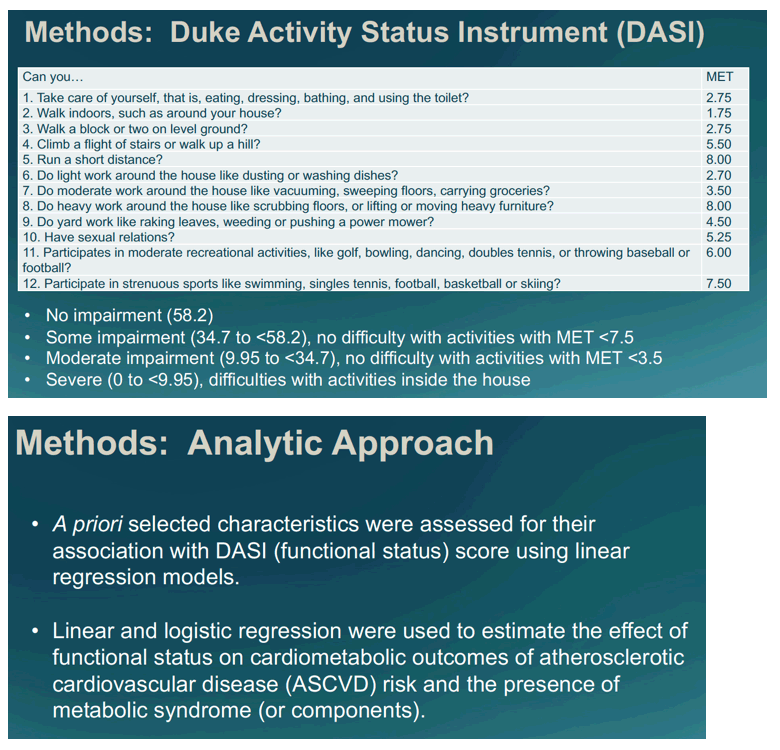
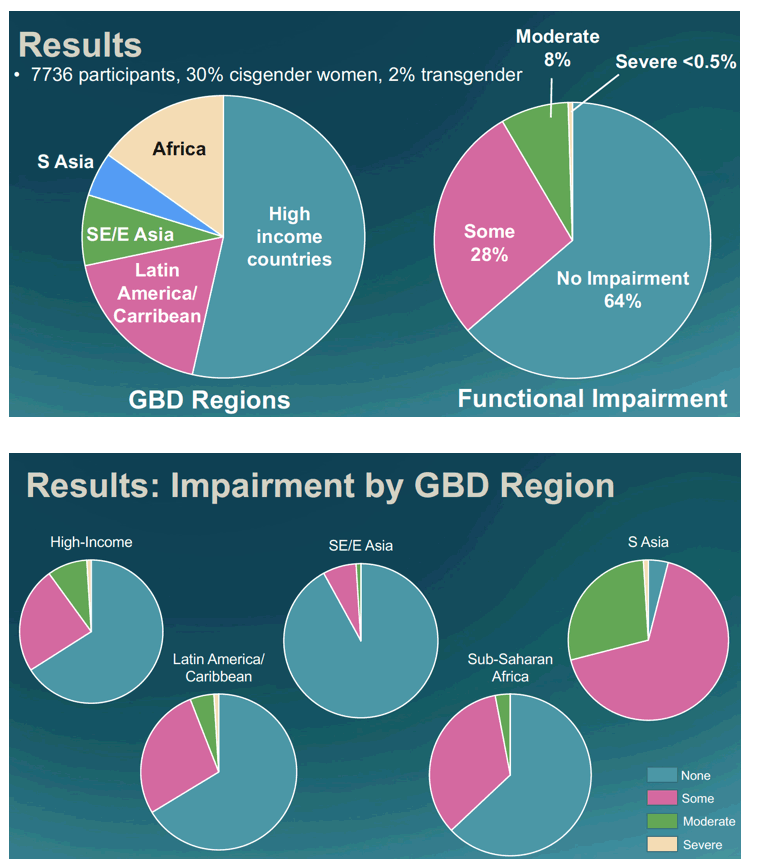
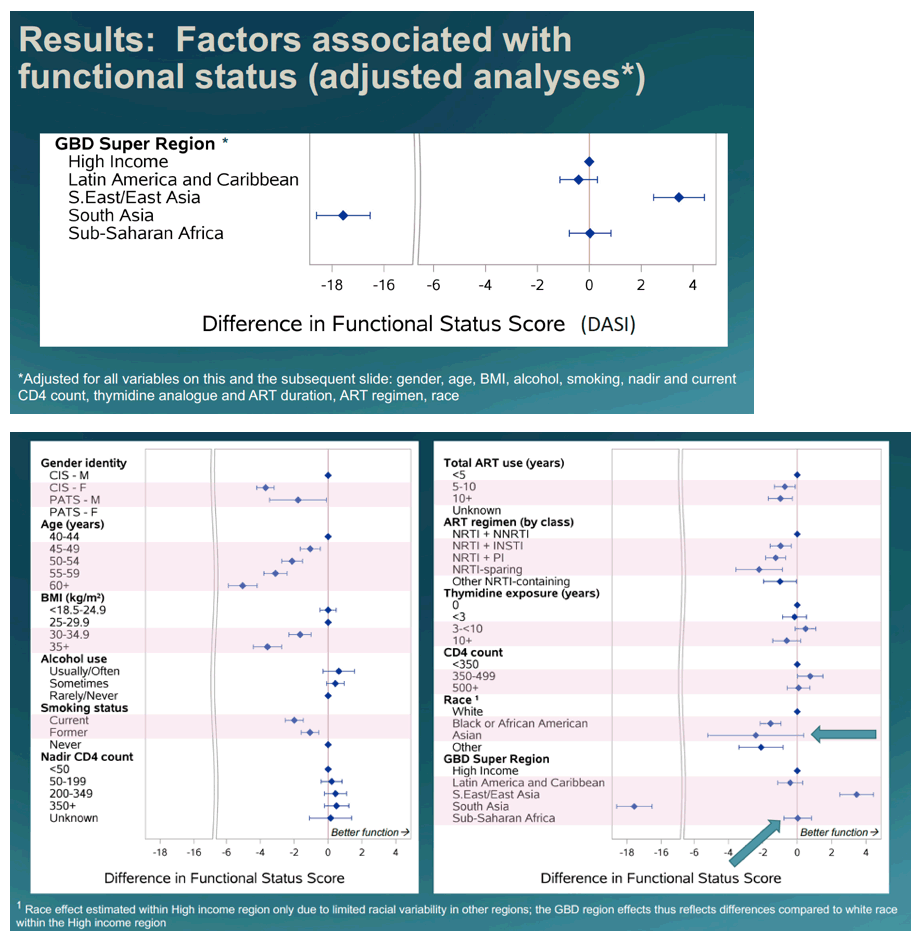
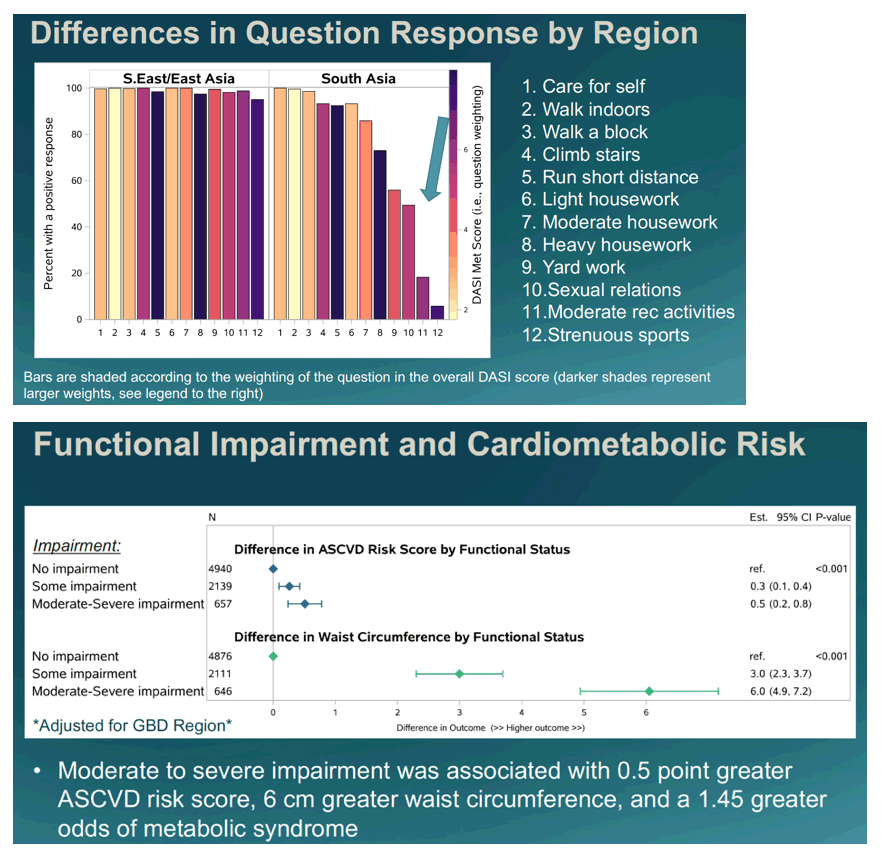

|
| |
|
 |
 |
|
|